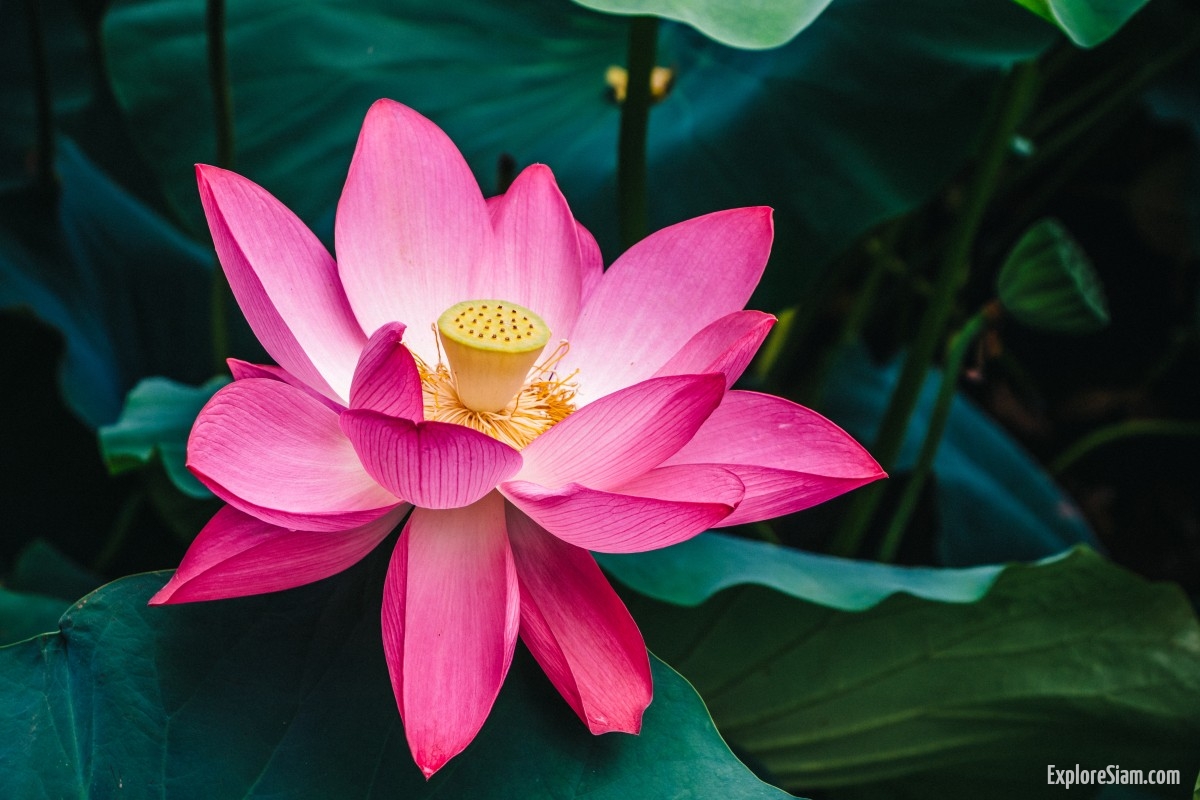The lotus flower is one of the most iconic and revered symbols in Buddhist tradition, embodying profound spiritual meanings and teachings. This exquisite plant, which thrives in murky waters, serves as a powerful metaphor for purity, enlightenment, and the inherent potential for transformation and growth within every individual.
The Unique Characteristics of the Lotus
Two distinct aspects of the lotus flower set it apart from other plants. The first is its ability to bloom in muddy, murky waters, symbolizing purity and resilience. The second is its unique capacity to plant a seed at the same time it blossoms, representing the interconnection of cause and effect, a core concept in Buddhist philosophy.
Blooming in Muddy Waters
The lotus flower’s ability to rise and bloom from the depths of murky, polluted waters signifies the purity of spirit that can emerge despite the challenges and impurities of the material world. In Buddhist teachings, this aspect of the lotus represents the idea that individuals can attain enlightenment and rise above their circumstances, regardless of their beginnings or the difficulties they face. The murky water symbolizes the trials and tribulations of life, while the blooming lotus represents the achievement of spiritual awakening and purity of the mind.
Simultaneous Blooming and Seeding
The lotus flower’s unique ability to bloom and plant a seed simultaneously is a profound illustration of the principle of cause and effect, or karma, in Buddhist thought. This characteristic underscores the belief that every action has immediate consequences, and that the present moment is both a result of past actions and a seed for future outcomes. This cyclical nature of existence is central to Buddhist teachings, highlighting the interconnectedness of all actions and their impact on one’s spiritual journey.
Symbolism in Buddhist Art and Architecture
The lotus flower is a pervasive motif in Buddhist art and architecture, often depicted in statues, paintings, and carvings. It is commonly shown as the base or seat upon which deities and enlightened beings, such as the Buddha, sit or stand, emphasizing their transcendent purity and enlightenment. The lotus throne signifies the divine nature of these figures, symbolizing their rise above the mundane and their attainment of spiritual perfection.
In Buddhist temples and stupas, the lotus is frequently incorporated into the design, symbolizing the path to enlightenment that practitioners strive to follow. The unfolding petals of the lotus represent the gradual opening and blossoming of one’s spiritual awareness and wisdom, guiding practitioners towards the ultimate goal of Nirvana.
The Lotus in Buddhist Texts and Teachings
The lotus flower is prominently featured in many Buddhist texts and teachings, illustrating key principles and inspiring practitioners on their spiritual path. One of the most well-known references is found in the Lotus Sutra, a seminal Mahayana Buddhist text that uses the lotus as a metaphor for the potential for enlightenment inherent in all beings. The Lotus Sutra teaches that, just as the lotus rises unsoiled from the mud, individuals can overcome their ignorance and suffering to achieve a state of spiritual purity and enlightenment.
In another famous Buddhist teaching, the parable of the white lotus illustrates the concept of impermanence and the transient nature of worldly attachments. In this parable, the Buddha compares the world to a lotus pond, where the flowers represent different stages of spiritual development. Some lotus buds are still submerged in the water, symbolizing those who are still entangled in worldly desires, while others are emerging from the water, representing those who are beginning to awaken. The fully bloomed lotus flowers, which rise above the water’s surface, symbolize those who have attained enlightenment.
The Lotus in Daily Buddhist Practice
In daily Buddhist practice, the lotus flower serves as a reminder of the core teachings and aspirations of the path to enlightenment. Practitioners often incorporate the lotus into their meditation and prayer rituals, using it as a focal point to cultivate mindfulness, compassion, and wisdom. The image of the lotus is also a common element in Buddhist chants and mantras, reinforcing its symbolic significance and inspiring practitioners to strive for purity and enlightenment.
One of the most popular mantras in Buddhism, “Om Mani Padme Hum,” is closely associated with the lotus flower. This mantra, which is often translated as “The Jewel is in the Lotus”, encapsulates the essence of Buddhist teachings, emphasizing the union of wisdom and compassion. The lotus in this context represents the unfolding of spiritual potential and the realization of one’s true nature.
The lotus flower, with its unique characteristics and profound symbolism, holds a special place in Buddhist tradition. Its ability to bloom in muddy waters and simultaneously plant seeds embodies fundamental truths about the nature of existence, purity, and the interconnectedness of all actions. Through its depiction in art, architecture, texts, and daily practice, the lotus continues to inspire and guide practitioners on their spiritual journey towards enlightenment. As a symbol of resilience, purity, and the potential for transformation, the lotus flower remains a timeless emblem of the profound wisdom and teachings of Buddhism.





